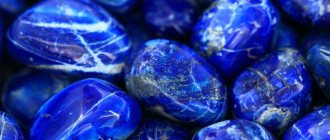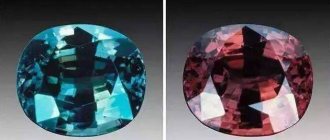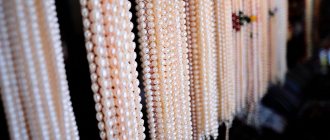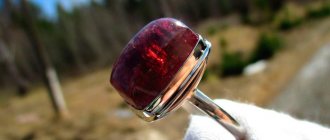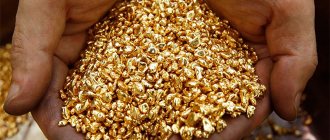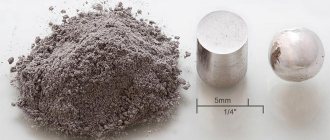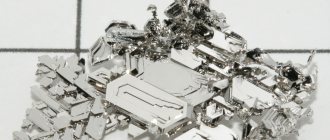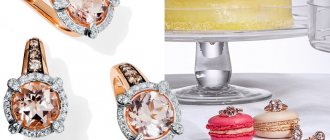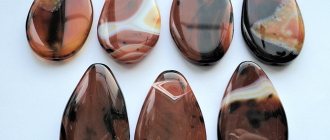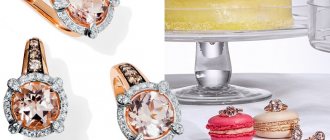Spinel is a rare mineral with an intriguing biography and magical properties. The prosaic name of the nugget - “magnesium aluminate” - does not fit in with its amazing beauty. It is as perfect as a ruby or sapphire, only less well known.
For countless centuries, this magnificent crystal has been treated as the “royal stone”. Many royal families, as well as mineral collectors and jewelry lovers, sought to add rare gems to their jewelry collections.
History and origin
The name spinel, which is familiar to us, comes from the German language. In the Middle Ages, the mineral was called lal, and for a long time it was called alabandine. Records of the gem are found even in documents dating back to the 9th century. Scientists doubt where the modern German word came from. It may have been derived from the Greek "spark" because the shine appears prickly; the second version is the Latin word spina, meaning thorn and reflecting the characteristic feature of crystals - a pointed structure.
The properties of spinel jewelry stone have attracted the attention of craftsmen in different centuries. They decorated Monomakh's hat and Wittelbach's crown. In Ancient Rus' they believed that lal helped against any illness and quenched thirst. It appears in Marco Polo's materials collected in the 13th century. It was this traveler who discovered the gem to the world and attracted the attention of jewelers of his time to it. Marco Polo explored the Kuhilale deposit, where transparent minerals had long been mined under the guise of rubies.
Currently, Kuhilale is the only source of the noble pink variety, classified as the 1st group of precious stones. All the gems picked up in the Pamirs are impeccably beautiful, enchanting with their glassy shine.
The gem belongs to the 1st category
Physicochemical characteristics
Mineral – oxide; formula MgAl2O4.
There is noble (red, green, blue shades), chrome (black), regular (dark green, black), zinc spinel. The most common type is regular, which includes the subcategories ceylonite and pleonaste.
Features of the mineral:
- transparency and opacity possible;
- correct crystal shape (dodecahedron, octahedron);
- cubic system;
- white line;
- imperfect cleavage;
- conchoidity of fracture;
- hardness up to 8 units;
- asterism with small impurities on the 2nd order axes;
- density up to 4.1 units.
The color of spinel is due to inclusions. The red color is due to chromium, yellow – iron, purple – manganese. The crystal becomes transparent due to the isomorphic replacement of Mg with Zn, Fe3+, Mn2+. Magnetic abilities are due to inclusions of iron, cobalt, vanadium, and chromium. Luminescence is possible.
The mineral belongs to the oxides
Stone products
The most beautiful stones are selected by jewelers and collectors. They are made from:
- rings;
- brooches;
- necklace and beads;
- cufflinks and tie clips.
Figurines, bracelets and animal figurines are made from dark green or black pleonaste.
How to wear and care
Stones and items are stored in a box with soft walls and worn in the evenings. The mineral does not like sunlight and may change color or fade.
They clean the gem several times a year; it is advisable to entrust this task to professionals, since the stone is expensive. When cleaning yourself, use soapy water and a soft sponge. A stone that is wet from water must be wiped dry before placing it in the box.
Where is spinel mined?
The most famous ancient deposit of the mineral is in the Pamirs (Kukhilal).
In Russia, crystals are mined:
- in Karelia (Varatskoye, Kitelskoye, Kaltsifirovaya);
- in Crimea (Kastel, Aratukskaya);
- on the Kola Peninsula (Kovdorsky);
- in the Urals (Praskovye-Evgenevskaya, Shishimskaya, Berkutinskoye, Borzovskoye, Mochalin log, Akhmatovskaya, Eremeevskaya, Perovskitovaya);
- in Siberia (Kuraginsky, Khungtukunsky, Teyskoye);
- in Transbaikalia (Borzinsky, Sherlovogorskoye);
- in Yakutia (Tas-Khayakhtakh, Vilyuiskoye, Gon, Koltikon);
- in the Far East (Kondersky);
- in the Caucasus (Malkinsky);
- in the Irkutsk region (Slyudyanka, Tazheransky, Olkhon Gates).
Valuable samples are obtained in Kazakhstan (Solnechnoye), Tajikistan (Pamir), Uzbekistan (Almalyk), Ukraine (Samotkanskoye, Volodarsk-Volynskoye, Zavalevskoye, Krymka), Azerbaijan (Bulla), Ossetia (Shadil-Khokh).
The most famous source of lals is Myanmar's Mogok. The gem is found on a par with ruby and is indistinguishable to the eye. It is also mined in Thailand, India, and Brazil. It was found in the Hungarian Kaba, Italian Monte Somma, and Japanese deposits in combination with brucite and diopside. Valuable jewelry samples are mined in Borneo on a par with gold.
The gem is found everywhere
Varieties and colors
The peculiarity of crystals is the variety of shades of natural stone. There are transparent, colorless and colored in a variety of shades from red to blue. The color is determined by additional inclusions. The most valuable jewelry samples are transparent red, blue, and purple. They are called noble. Crystals with an alexandrite effect are prized - colored blue in the sun, but changing color to red in the light of lamps. The richest mines of noble varieties are the Pamir, Indian, and Borneo.
An ordinary gem (ceylonite) is dark brown due to inclusions of iron. It is found often, usually in large crystals. It is mined in abundance in the Urals. Black picolite enriched with chromium is used for industry and occasionally in jewelry. Ganit is a subcategory colored with iron and zinc.
The variety of spinel colors is great
Colorless
Rarely seen. It can be transparent, colorless or have a slight pinkish, lavender, grayish tint, visible in certain lighting. A feature of a colorless mineral is the absence or minimal concentration of impurities. A correctly cut crystal resembles a diamond, but loses the play of light due to lower dispersion.
Ruby (red)
Lal (red spinel) is the most expensive variety. Visually similar to a precious ruby. Sometimes lal is called chrome or ruby spinel, since the color is due to chromium molecules. The saturation of the shade varies: there are very light and saturated dark stones, the color of which is close to black. Often crystals, in addition to the main color, play red, purple, and brown. The cost is determined by purity and color saturation. In recent years, Jedi variety lalas have been of particular interest to connoisseurs and collectors - like crystals from Burma sparkling from the inside. The average sample size is up to 2 carats.
Precious lal
Sapphire (blue)
The blue variety of gem is one of the most expensive. The color is due to cobalt molecules, which is why the variety of spinel is officially called cobalt. Shade variations - from neon blue to dark and rich. Sometimes sapphire stone is called ganite or ganospinel. There are samples with purple and gray additional tones. The effect of color change depending on the lighting is possible. The most valuable specimens are of medium color saturation.
Bale-ruby (pink)
The delicate stone looks noble, romantic, smoky. This gem is used for the best women's jewelry. Bale rubies are often combined with diamonds, emphasizing the beauty of the delicate color.
The best examples of pink spinel are mined in the Pamirs. All specimens are clean, delicate, and have no additional shades. The color resembles a pink diamond: the color is cool, moderate in brightness.
In addition to the Pamirs, bale ruby was found in Vietnam, Tanzania, and Burma. Crystals from the Tanzanian Mahenge deposit are unusual in their neon color, rich and bright color, reminiscent of synthetics. The peculiarity of natural stone is the glow emanating from within.
Spinel is combined with diamonds
Almadine (purple)
The almadine gem is painted in a delicate purple hue. There are samples with pink and steel gray undertones. These look especially gentle, noble, and elegant. The dispersion of light is best revealed on faceted specimens of lavender and lilac color.
Rubicel (yellow and orange)
The red gem is rare; often the color is enriched with yellow and red. The cut stone looks bright and juicy. The best company is yellow gold. The russet, russet variety often appears neon. There is no such thing as dark orange spinel.
Ganospinel (blue)
The blue variety is one of the most expensive. The stones are rare and attract attention with their brightness and purity of color. The most expensive ones are neon samples the color of the summer sky, but these are very rare. Most often, jewelry is mined in the Vietnamese Luk Yen deposit. Due to its rarity, the blue variety is especially valuable among collectors.
Photo of sky-colored spinel
Chlorospinel (emerald green)
Emerald stone is extremely rare and has hardly been studied. Possible color options range from bright green to dark, close to black. Most often, unsaturated, grayish samples are found. The color is due to chlorine impurities. Jewelry with chlorospinel is extremely rare and is highly valued by collectors.
Hercynite, picotite, pleonast (black)
Black is a relatively cheap type of stone. It is classified as semi-precious, used in costume jewelry, and set in silver. When cut correctly, spinel is comparable to a black diamond, and careful polishing gives the stone a beautiful shine. There are transparent and opaque stones; shade variations - from gray to rich black.
Black gem
Questions/Answers
Not everyone can afford to buy noble spinel. But anyone can find out what kind of stone it is. The main thing is that there would be questions...
How to distinguish a fake?
Artificial spinel is produced from a mixture of magnesium and aluminum oxides with the addition of chromium, iron, and cobalt. Only a specialist with the necessary equipment and special knowledge can distinguish a synthetic crystal. So it’s better to take the stone to a specialist, and don’t dance with a tambourine, magnifying glass and other home-building “devices.”
How to care?
- Provide the gem with personal space. Select a separate case (box, bag) with thick soft inner walls.
- Protect from rough mechanical influences (impacts, falls).
- Housework using household chemicals is not beneficial for stones (especially in bracelets and rings).
- Wash the contaminated jewelry with a mild soap solution, rinse off the soap with clean water, and dry the wet jewelry with an absorbent wipe.
Who should wear it?
- Singles in search of family happiness.
- Have you given in to the blows of fate? Wear spinel. The stone will help restore strength, the desire to live, and give good luck.
- For lovers of social parties. Decoration will not only show (to those who understand) your material level, but also your understanding of precious stones.
- First date, new love. Be sure to wear jewelry with a red gem.
How to wear?
Brown and green spinels work very well together if you wear them in a bracelet.
It is customary to set noble spinel in gold. It is advisable to wear rings and rings on the left hand, on the index or ring fingers.
What is the price?
The most expensive variety is ruby spinel. It is classified as a first-order gemstone.
Other varieties are also not cheap. But the price greatly depends on the color and even the popularity of the gem.
- Ganospinel is cheap, with prices per carat starting at $20.
- For ruby spinel, you will have to pay much more. Here the price level is from $500 per carat.
Note: Spinel can be considered an investment. The stone is in trend among the most famous jewelry houses in the world.
What colors are there?
Despite the fact that noble spinel is a rare mineral, it charms and amazes with its variety of colors. This:
- red;
- orange-red;
- pink;
- green;
- yellow;
- blue;
- black;
- purple.
Where can I buy?
It's better to do without online stores. Large jewelry stores, stores from jewelry manufacturers.
You will be lucky if you can buy natural spinel. But no one can distinguish synthetic from natural (except a jeweler, and after a series of tests).
What stones does it go with?
Here the word is lithoastrology.
Gems will be friends, or at least tolerate each other, if they belong to the same element. Therefore, all stones of the Fire element will not conflict with spinel.
The same (to a lesser extent) applies to Air gems.
Esotericists categorically do not recommend water stones in combination with spinels.
For your information: in general, spinel is a self-sufficient stone and does not need neighbors for support.
What can you find in spinels?
In 1945, in one of the batches of pink (mallow-colored) spinel, a stone was found that showed slight birefringence. Spinel does not have this property. One Irish gem specialist, Count Taafi, really liked the mineral. The stone was later named after him - taaffeite.
The composition of the stone is a cross between spinel and chrysoberyl.
The stone is extremely rare. Until recently, only three registered taaffeite crystals were known in the world.
It is a million times rarer than diamond. More precisely, geologists from China found taaffeites, but due to their tiny size, these crystals cannot be processed into jewelry.
Where is it used?
Traditionally, spinel is valued in the jewelry industry. Gems decorate royal regalia and religious utensils, and when decorating the royal chambers, pink varieties of the mineral were often used. The dark red stone crowns the crown of Catherine II, and the museum's "Ruby of the Black Prince" and "Ruby of Timur" were classified as flawless spinel upon inspection.
Now crystals are a valuable jewelry material from which inserts for jewelry are made. The gem is combined with diamonds, pearls, and precious metals.
The artificial subspecies is a fire-resistant material. Used in ceramics, in the manufacture of durable paints for ceramics.
Interesting Facts
Among the jewels that adorn the Iranian crown, pride of place is occupied by the largest spinel ever discovered. It is called “Sumerian”. A large gem weighs more than 100 grams.
The pride of the National Collection of the United Kingdom of Great Britain are two very famous spinels: “Ruby of the Black Prince” (weighing 34 g) and “Ruby of Timur” (weighing 72 g).
The first has been in the possession of the British royal family since 1367. He was given to the Castilian prince Edward of Woodstock (nicknamed the Black Prince for his cruelty) in gratitude for his help in suppressing the uprising. Subsequently, the gem adorned the helmets of Henry V and Richard III, until it shone in the most prominent place of the royal crown, surrounded by 3,093 other gems.
The second “ruby” is an untreated red spinel that was intended for Queen Victoria's necklace. The stone was named after its first owner, Emperor Timur, who founded the Timurid Empire. The gem was captured by the British Empire during the annexation of the Punjab region in 1849. The East India Trading Company later presented it as a gift to Queen Victoria in 1853. The names of six of its previous owners can be seen engraved on the gemstone.
Medicinal properties
Lal was used as a healing stone in Ancient Rus' - they believed that it drives away any disease and eliminates thirst. Paracelsus prepared medicinal powders from spinel. In modern alternative medicine with a stone:
- enhance male sexual activity;
- increase female attractiveness;
- cleanse the blood and activate blood flow;
- treat open wounds;
- strengthen the body, strengthen the immune system;
- improve vision (especially effective for myopia);
- fight infectious, viral diseases, inflammation;
- treat muscles, joints, migraines, hypertension.
A stone of any color has powerful positive energy, which it generously shares with the owner, attracting health and overall success. Green varieties help with back pain, and blue varieties help with stomach pain.
Constantly wearing jewelry with spinel prevents illness. The most effective for disease prevention are red samples.
Lal is used in blood treatment
Magic properties
The gem is useful to the owner in all areas of life. Active people with a clear position in life can count on special support. Indecision of character weakens the magic of the crystal.
In the East they believe that the magic of red stone is love. Lal awakens love and passion. Crystals liberate and help free the mind from the shackles of stereotypes. Some believe that a person with a weak character is irrevocably drawn into the world of illusions and dreams by the mineral. The blue sample gives inspiration and helps to show and realize your creative streak.
The stone interacts with the Manipur and Svadhisthana chakras; releases and activates Yang energy. Crystal is a stone of good luck.
Lal helps sincere, decent people. In the hands of an evil, envious person, the talisman loses its power. The amulet gains greater power when set in gold. Decoration:
- relieves loneliness;
- brings happiness;
- enhances intuition;
- awakens the gift of clairvoyance.
Rings and earrings are especially useful as talismans.
Jewelry with lal - magical talismans
This is interesting
- For creative people - musicians and artists, it is recommended to wear rings with spinel on the ring or index finger of the left hand, and wear earrings with a stone. It will give inspiration, new ideas, and help create a unique masterpiece.
- It is necessary to become a sincere and kind owner for the stone - then it will reveal all its positive qualities. It is dangerous to deceive and hide the truth from spinel.
- You shouldn’t wear the stone every day - you can go into a fantasy world.
- If a person has a nervous job, you can talk out all the problems to the spinel or just think about them while looking at the stone. Calm will come, thoughts will be put in order and a way out of any situation will be found.
- Spinel should not be worn with other stones, otherwise the mineral may cause harm.
Sources and literature
- Blasse J., Crystal chemistry of ferrospinels, trans. from English, M., 1968
- Budanova K.T., Budanov V.I. A new find of noble spinel in the SW Pamirs. – DAN TajSSR, 1978, 21, No. 6, 43-45. (n. Yamchin district, Tajikistan)
- Betekhtin A. G. Mineralogy course. - Moscow: KDU, 2007. - 721 p.
- M.I.Pylyaev. "Precious stones, their properties, locations and uses." - third, significantly expanded. - St. Petersburg: A.S. Suvorina, 1896. - 406 p.
- Litsarev M.A. and others. Violet spinel of the SW Pamirs. – Precious and colored stones. – M.: Nauka, 1980, pp. 199-210. (Gorondarin manifestation)
- Kulikov B.F., Bukanov V.V. Dictionary of semi-precious stones (Russian). — 2nd ed., revised and expanded. - L.: Nedra, 1989. - P. 85. - 168 p.
- Trukhin V.I. Introduction to rock magnetism. M., 1973
- Chukhrov F.V.. Bonstedt-Kupletskaya. E.M. Minerals. Directory. Issue 3. Complex oxides, titanates, niobates, tantalates, antimonates, hydroxides. - Moscow: Nauka, 1967. - 676 p.
- Spinel on the Wikipedia website ru.wikipedia.org.
5 / 5 ( 6 votes)
How to spot a fake
Determining spinel on your own is not easy. The mineral is counterfeited with artificial samples (these can only be detected in the laboratory), cheap stones, glass and plastic. It is easier to identify plastic and glass imitations - they are cheap, weigh little, do not play in the light, and do not leave the feeling of a heavy cold object in your hands.
If you have doubts about the authenticity of a piece of jewelry, the best option is to show the piece to a gemologist. Since natural spinel is expensive, the cost of the examination is fully justified by the risks.
Synthetic spinel
Synthetic (aluminum-magnesium) spinel - stones made in the laboratory. During production, coloring components are added to the composition, so the finished crystals play pink, red, purple, green and other colors. It is impossible to distinguish an artificial gem from a natural one by eye; the only option is laboratory examination.
A method for laboratory growth of crystals was discovered by accident during experiments to create blue sapphire using Verneuil technology. In one of the devices, instead of the required stone, a cubic spinel crystal appeared. In modern laboratories, crystals are grown using hydrothermal methods.
Synthetic stone is almost indistinguishable from natural stone
Price
The price of a stone is determined by its color, shine, and cutting method; spinel is an expensive mineral, second only to ruby, diamond or sultanite in price. The average cost of a red stone set in a gold frame is $500-600 per carat.
Violet edema gems are valued at $200-250 per carat, while pink minerals cost approximately $100-300 per carat. The final cost is also influenced by the appearance of the jewelry and the size of the stone, sometimes its history. Old stones, passed down by generations of connoisseurs, are many times more expensive, even if they have defects.
How to wear and care
Spinel is recommended to be worn in a gold frame - this maximizes the beauty and energy of the breed.
Wearing rules:
- always keep the product with you so you can concentrate on important tasks;
- wear jewelry on vacation;
- to protect against loneliness, wear every day;
- To attract good luck, store the product in a separate box.
Gem care is easy. It is enough to wipe with soft textiles; in case of severe contamination, rinse with warm water. Do not use aggressive cleaning agents or abrasives. If washing does not help remove stains, the jewelry is taken to a jeweler for specialized cleaning.
Rules of care
Expert recommendations will help preserve the amazing properties of a rare gem:
- To avoid color fading, keep your pebbles away from heat sources;
- to enhance the shine of the gem, wash it with soap and warm water, then rinse and dry (ultrasonic cleaners are not recommended, as they can damage your jewelry, especially if it contains inclusions);
- The best way to prevent your gemstones from getting dirty or damaged is to wrap them in cotton or velvet (harder stones, such as diamonds or sapphires, can scratch the spinel, so don't store all your jewelry in one box);
- Try not to let spinel come into contact with chemicals or cosmetics.
Black spinel is often used as a protective talisman against negative energies, so it needs to be cleansed and charged regularly. Simply hold the stone under clean water (faucet water is fine) and then leave it in the sun to dry and recharge. Sun, water, salt, fire smoke will not harm the precious stone in any way.
Compatibility with zodiac signs and names
Astrologers know exactly which zodiac sign suits spinel: the stone protects Leo. The energy of the mineral merges with human energy, enhancing it. The talisman attracts good luck and enhances charm.
Besides:
- For Aries and Sagittarius, decoration will give strength to achieve their plans;
- Capricorn, Virgo amulet makes optimistic;
- For Taurus, Pisces, and Libra, the talisman gives health and spiritual harmony.
Geminis are practically not affected by spinel, but the mineral is contraindicated for Aquarius and can cause depression. For Scorpios and Cancers, it drowns out intuition.
Crystal patronizes the name Sophia.
Usage
Cloudy and opaque stones are fake. People who are interested in learning about the spinel stone, its properties and whose zodiac sign the mineral matches are better off choosing real jewelry. They are created from noble specimens.
Previously, low-quality natural material was used in ceramic production, as well as in radio engineering and metallurgy. Now “synthetics” have completely replaced base gems. For example, from pleonast they create:
- budget bracelets and beads;
- many figurines;
- various figures.
Expensive jewelry based on spinel is second in cost only to sultanite, as well as ruby and diamond. A cut stone sometimes looks more impressive than scarlet corundum. But in terms of hardness, spinel is inferior to it.
